
Chemiluminescence Immunoassay (CLIA) provides a sensitive, high throughput, fully automated immunological technique, which has revolutionized Immunodiagnostics. It measures the intensity of light emitted when the complex of antigen in the patient's sample and the enzyme linked antibody reacts with chemiluminescent molecule (such as luminol) producing a weak signal. The enzyme component then provides signal amplification.
One reason accounting for the growing popularity of chemiluminescence assays is its exquisite detection sensitivity. With its wide potential chemiluminescence has become a powerful and a versatile technology in the in vitro diagnosis. CLIA provides advantages over other methods for having increased sensitivity, less prone to interference and background signals and requires simple instrumentation.
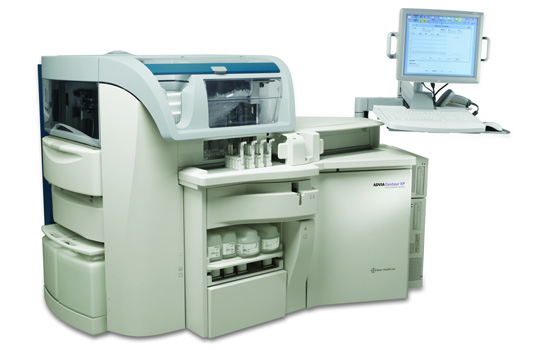
State of the art CLIA analyzers like Siemens ADVIA Centaur, Abbott Architect i2000, Siemens Immulite 2000 and Roche EEE modular analyzers are being used for investigations.
ELISA is an immunological technique which is used to detect the presence of an antibody or an antigen in a sample. An unknown amount of antigen is coated on a solid phase, and a specific antibody is washed over the surface so that it can bind to the antigen. The immune complex thus formed is linked to an enzyme, which acts on a substrate to give a coloured reaction which is detected using ultramodern ELISA plate readers. As in ELISA, the label that is added to produce detectable signal is an enzyme, therefore it is called as Enzyme Linked Immunosorbent Assay.
One of the greatest advantage of ELISA technology is that it provides quick and accurate results. It is widely employed to detect or quantify secreted or intracellular protein concentrations. It is an important diagnostic tool that estimates even a small quantities of antigen or antibody in a solution.
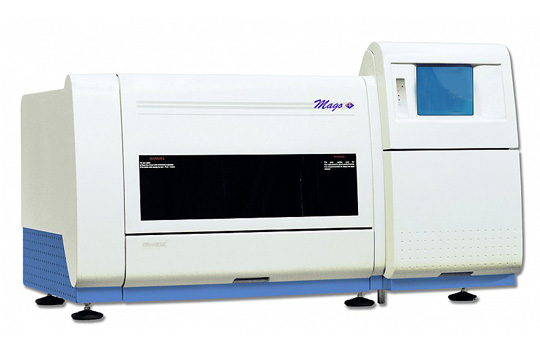
At Thyrocare, detection of analyte in the sample is done by qualitative ELISA. Mago4 analyser runs on the principle of ELISA technology.
When molecules in the mixture are very similar, direct quantification becomes difficult. HPLC is a form of column chromatography used frequently to separate, identify and quantify compounds. It consists of a stationary phase that absorbs the analytes and holds them for a particular time. All the molecules in the mixture will spend different time with different stationary phase and then come out at the end. The time that a molecule takes to travel from one end to other end of stationary phase is known as Retention time.
Hence all the molecules displays their own unique retention time for particular stationary-mobile phase combination. Silicagel is most frequently used as the adsorbent which is packed in a column. HPLC columns are densely packed as packing directly affects the resolution. At the end of the column, a detector is kept. As the molecules come out from the end, the detector detects and gives a peak on chromatogram. The peak area calculation quantifies the molecule of interest on the basis of standard values
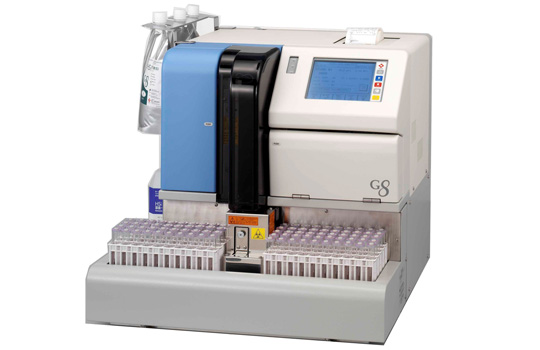
One of the most advanced and accurate test for monitoring diabetes- Glycosylated Hemoglobin (HbA1C) is done using HPLC technology on Tosoh G8 instrument at Thyrocare. The asset of this test is that it provides the glucose level over the period of four weeks to three months. As the life span of RBC is 8-12 weeks, thus the glycated hemoglobin molecule reflects the average glucose molecules to which it has been exposed during the life cycle.
Nephelometry is a quantitative method, based on the principle that a dilute suspension of small particles will scatter light (usually a laser) passed through it rather than simply absorbing it. The amount of scatter is determined by collecting the light at an angle.
The size, concentration and shape of the molecule altogether determines the amount of scattered light. Of these three, size and shape determines the angle of scatter and concentration intensifies the scatter at particular angle. Generally, molecules vary in size and shape, thus they become unique from these aspects. As nephelometry is a quantitative method, on the basis of the scattering of known concentrations, an unknown concentration may be derived. The concept of nephelometry is mostly applied for estimations of proteins as the latest breakthrough.
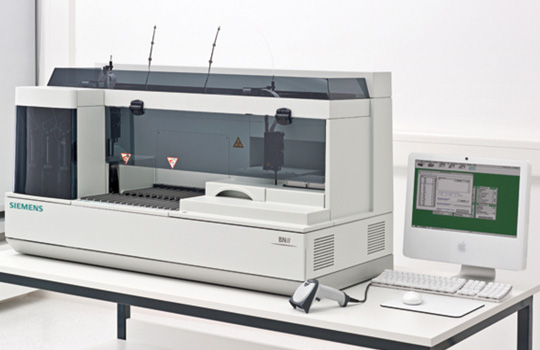
State of the art analyzers used for Nephelometric estimation at Thyrocare include BN II.
Photometry is the science of measuring visible light and is based on a relationship between absorption of light and the properties of the material through which the light is traveling (Beer Lambert's law).
Whenever light of a particular wavelength enters a solution of a substance, it comes out with a reduced intensity, this is because a part of it is absorbed by the solution. If this property needs to be exploited for the analytical work or biochemical assays, the phenomenon of absorption of light should obey the Beer-Lambert's Law. It can be stated as that the intensity of light decreases exponentially with the increase in the concentration of the solution and the depth or thickness of the solution through which the light passes.
This technology is integrated into various instruments which enables the detection of analytes.
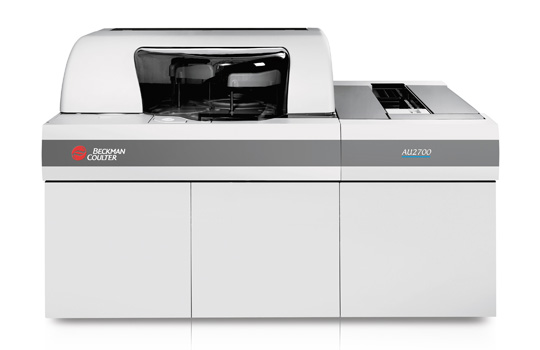
Extreme laboratory automations with world class chemistry analyzers like Olympus AU 2700, Siemens Advia 1800 and Roche P800 in modular system are been used for estimation.
LC-MS (or HPLC-MS, Liquid Chromatography - Mass Spectrometry) is the combination of the physico-chemical separation capabilities of liquid chromatography. Generally it is used for the detection and identification of chemicals in the presence of other chemicals (in a complex mixture or matrix).
The principle of LC-MS/MS is based on the fragmentation of charged ions and the detection of the resulting fragments. The interface is a particle beam type, which separates the sample from the solvent, and allows the introduction of the sample in the form of dry particles into the high vacuum region. Electron impact is of interest for molecules which do not ionize with API technique, or when an electron impact spectrum is necessary, since it provides spectral information independent of the sample introduction technique (GC or LC, or direct introduction) and instrument supplier. Thus it has a much higher selectivity and sensitivity than LC-MS and makes it possible to elucidate e.g. metabolite structures.
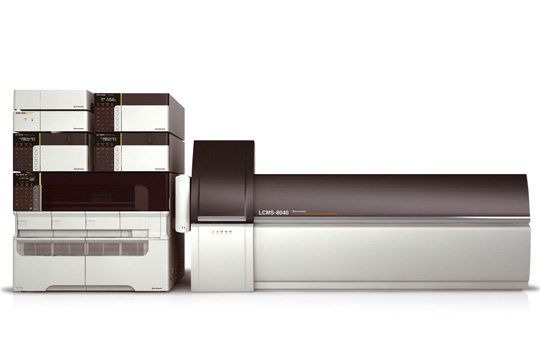
ICP-MS is the most advance technology used for doing trace metal analysis in biological and non biological samples.ICP-MS combination of two well established technology namely, ICP(Inductively coupled Plasma) source and mass spectrometry. ICP is a very high temperature excitation source ,the temperature which is maintained is about 10000 K,that effectively vaporizes,excites and ionizes the atoms. The Mass spectrometry is a technology which discriminates these ions depending on their mass to charge ratio. Mass spectrometry is used for quantification of atoms and molecule,thus ICP-MS gives quantitative as well as qualitative results.
Applications apart from blood specimen analysis, it is also used in elemental analysis in food industries, drinking and waste water industries.
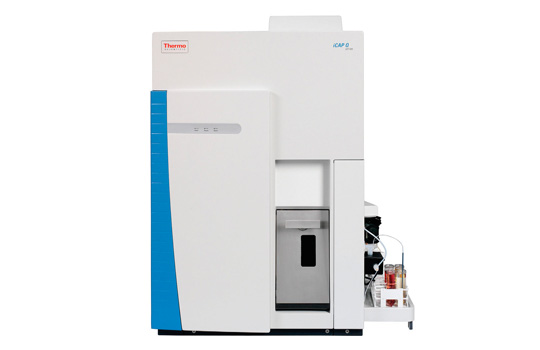
Copyright © 2021 | Dr A Velumani - Thyrocare Bangladesh Limited. All rights reserved.